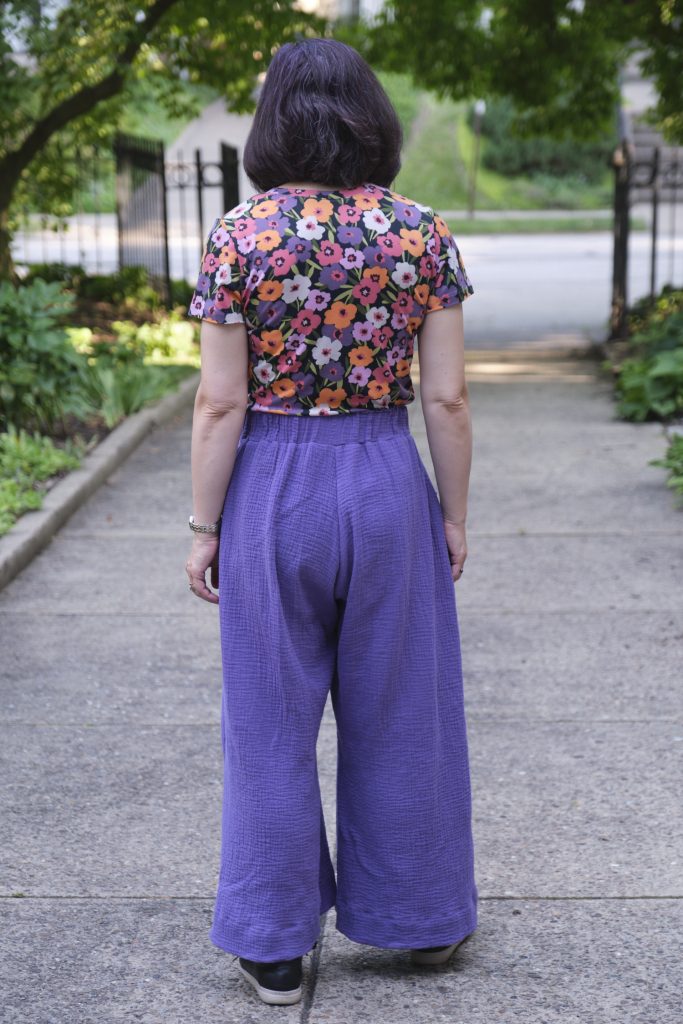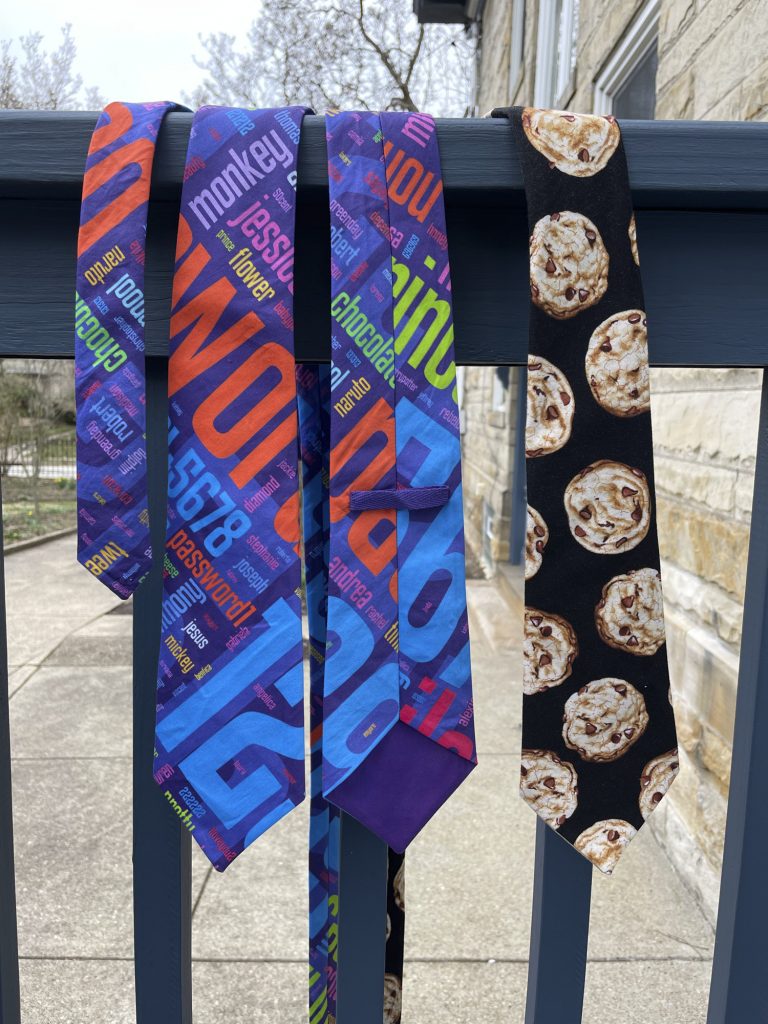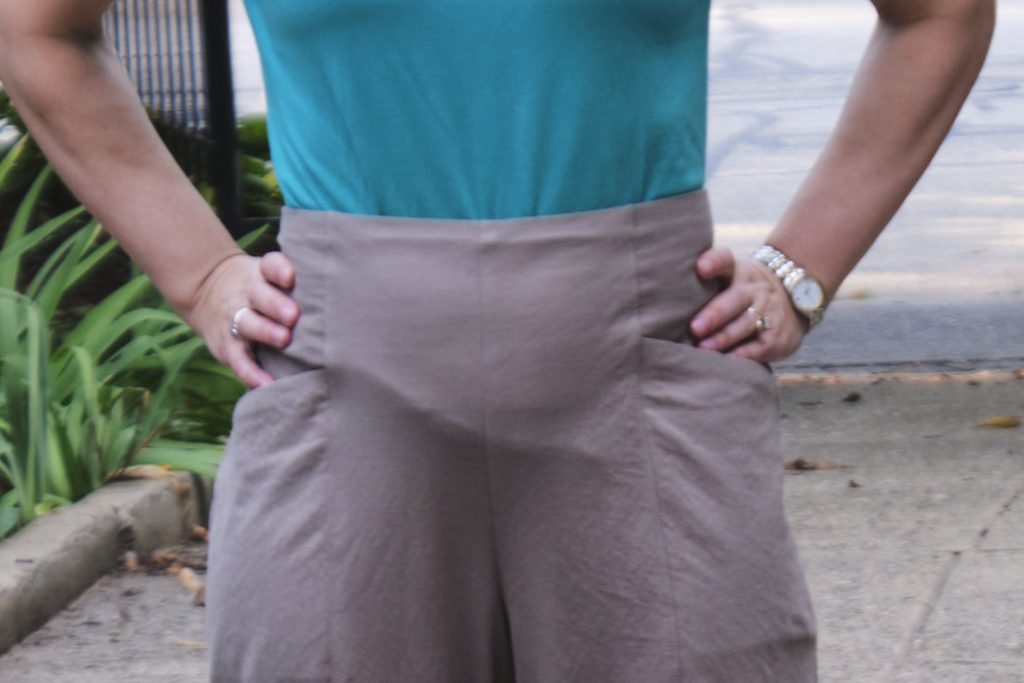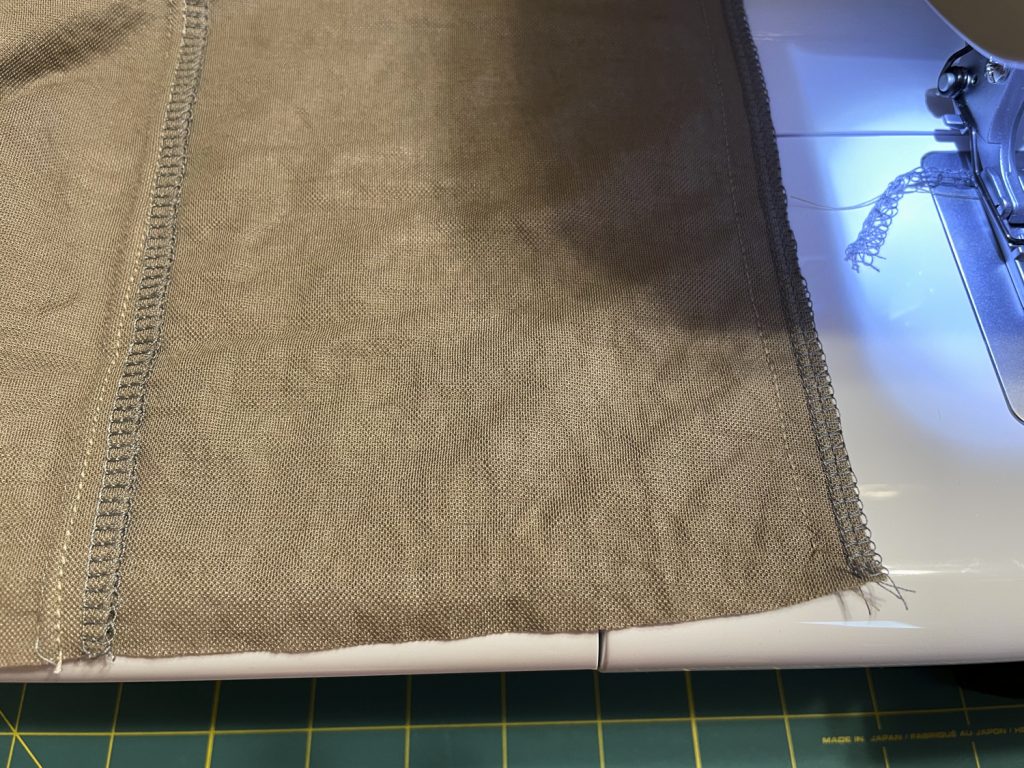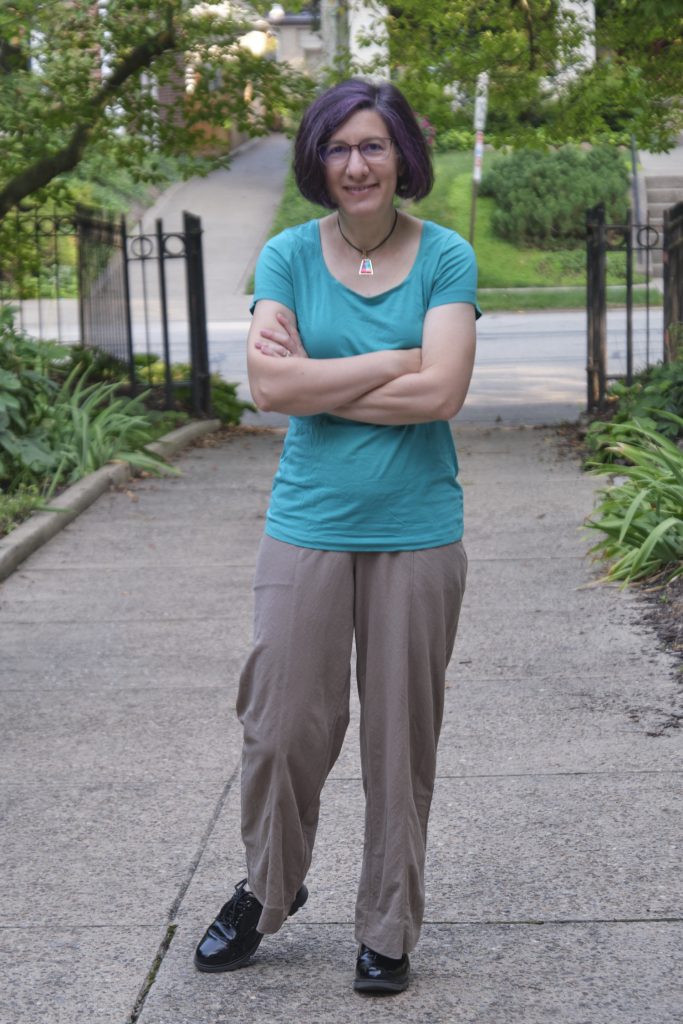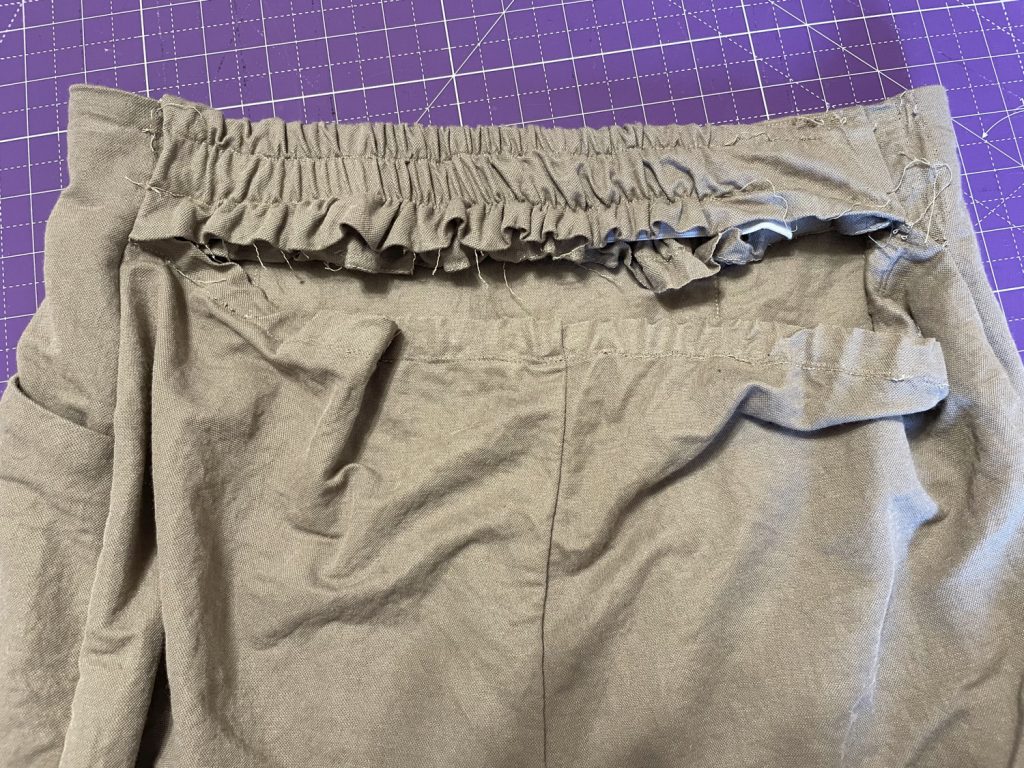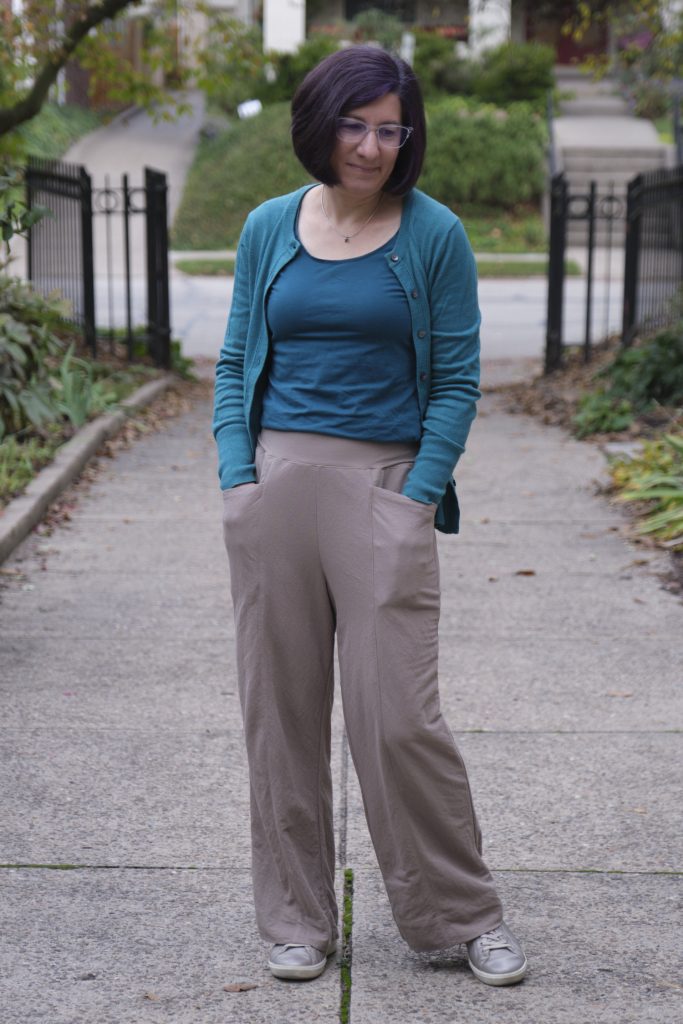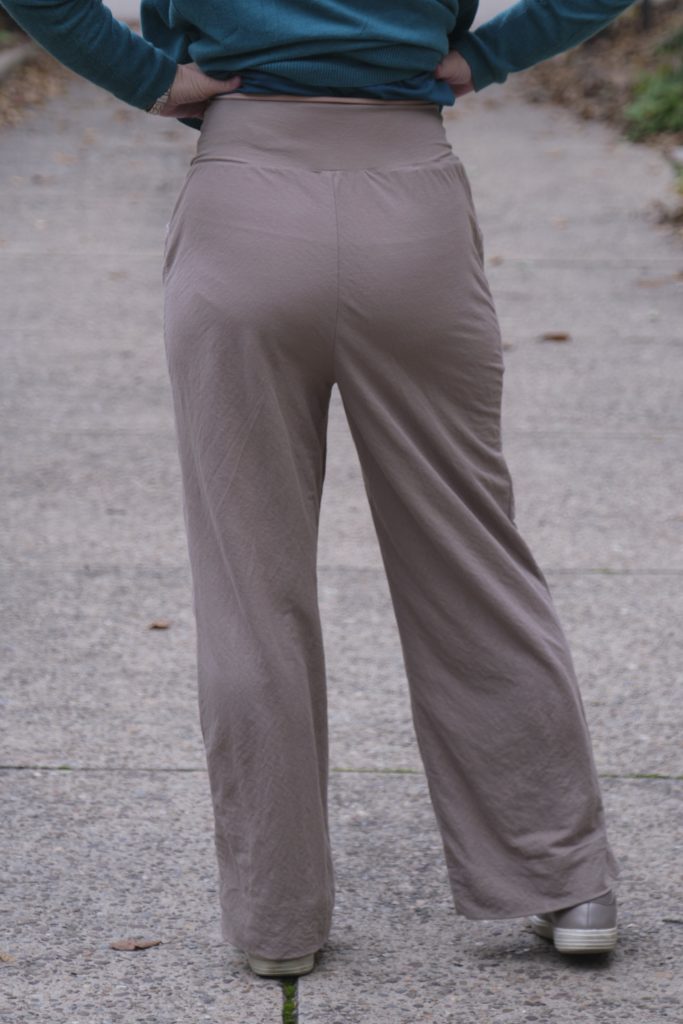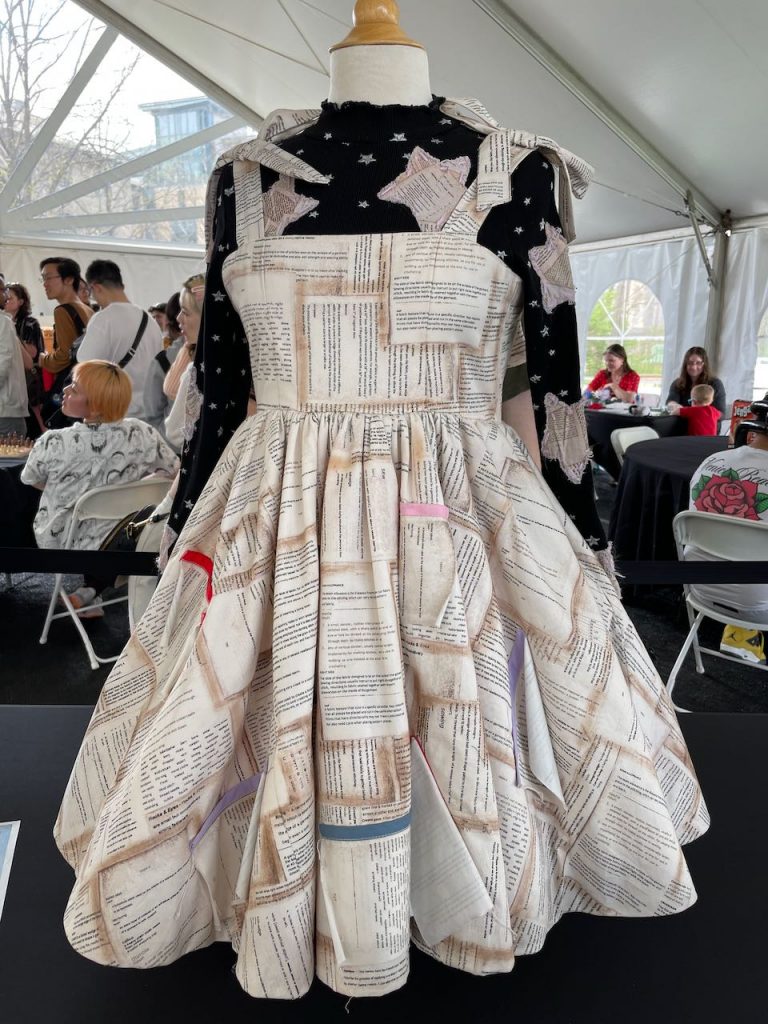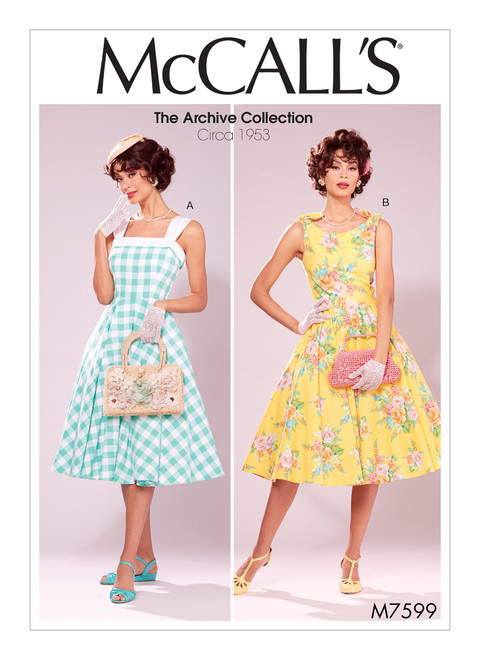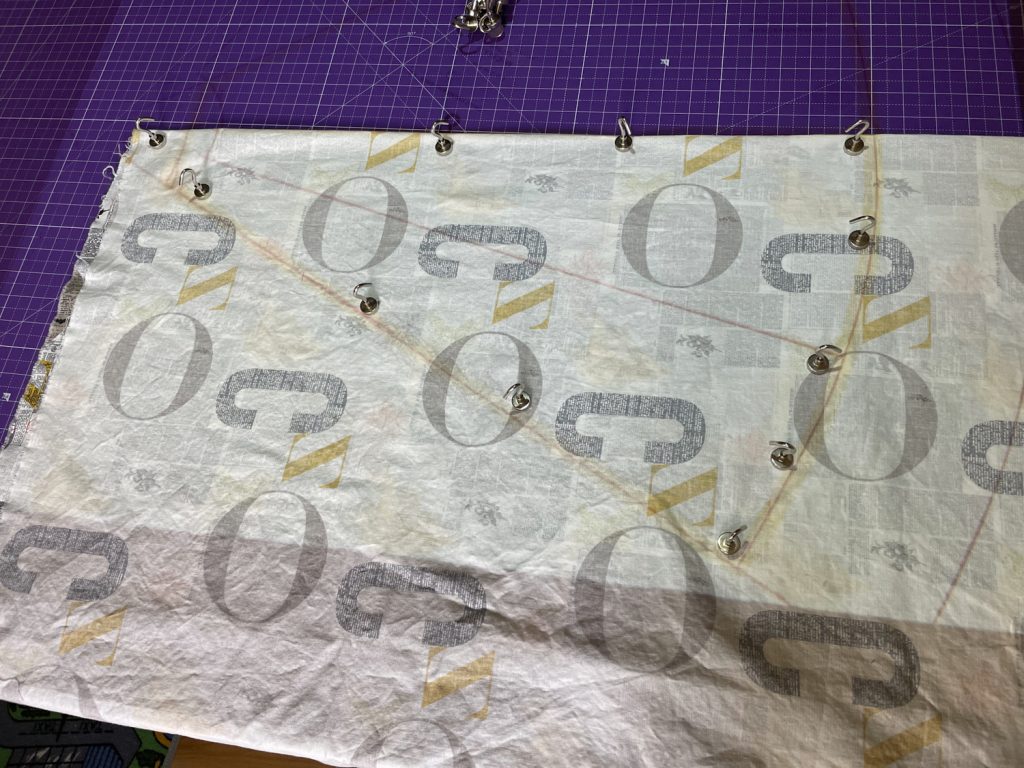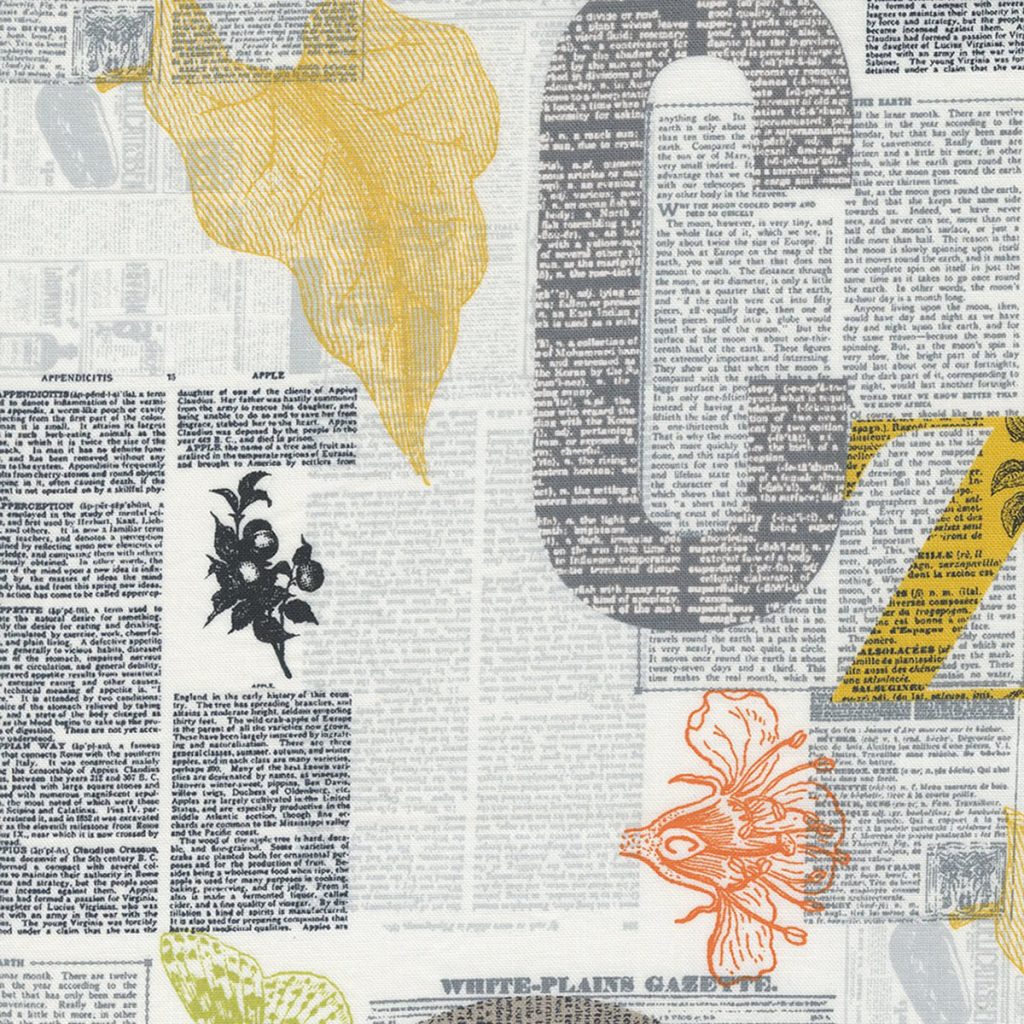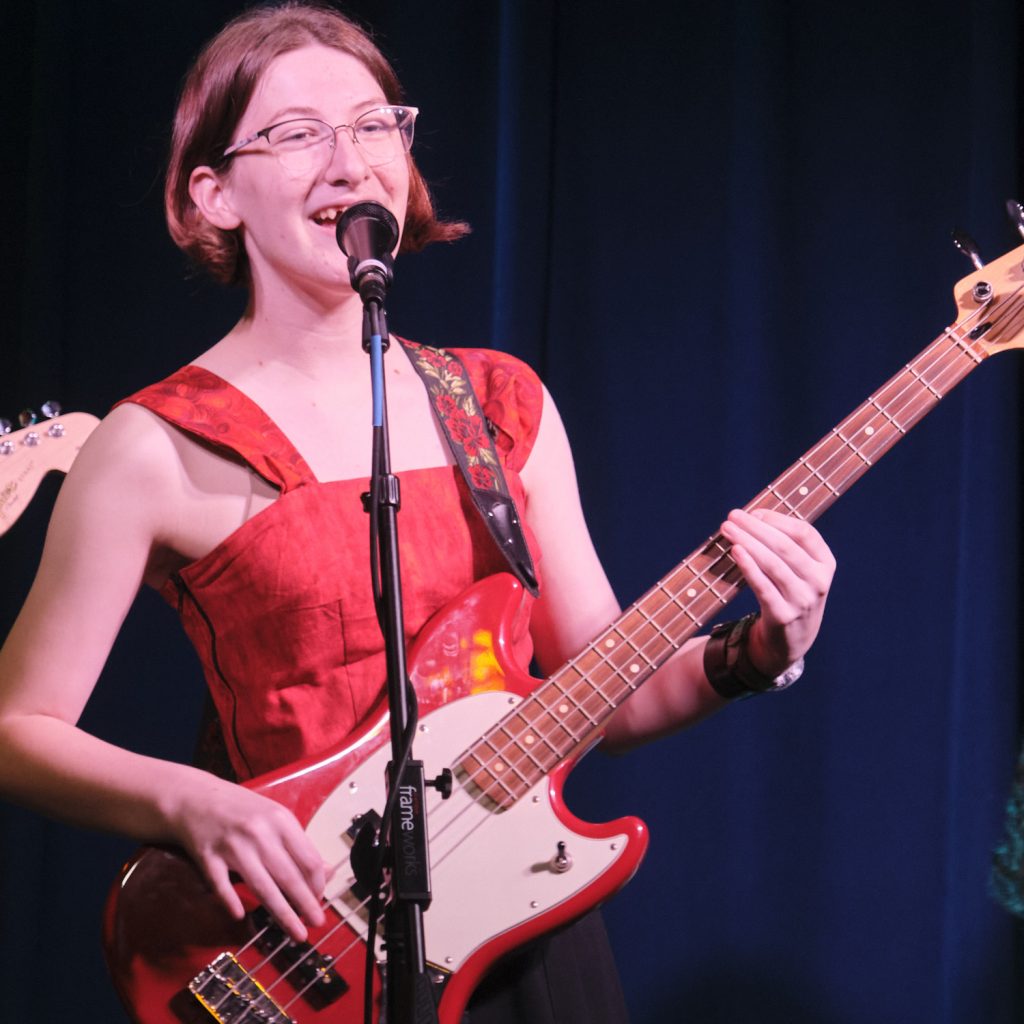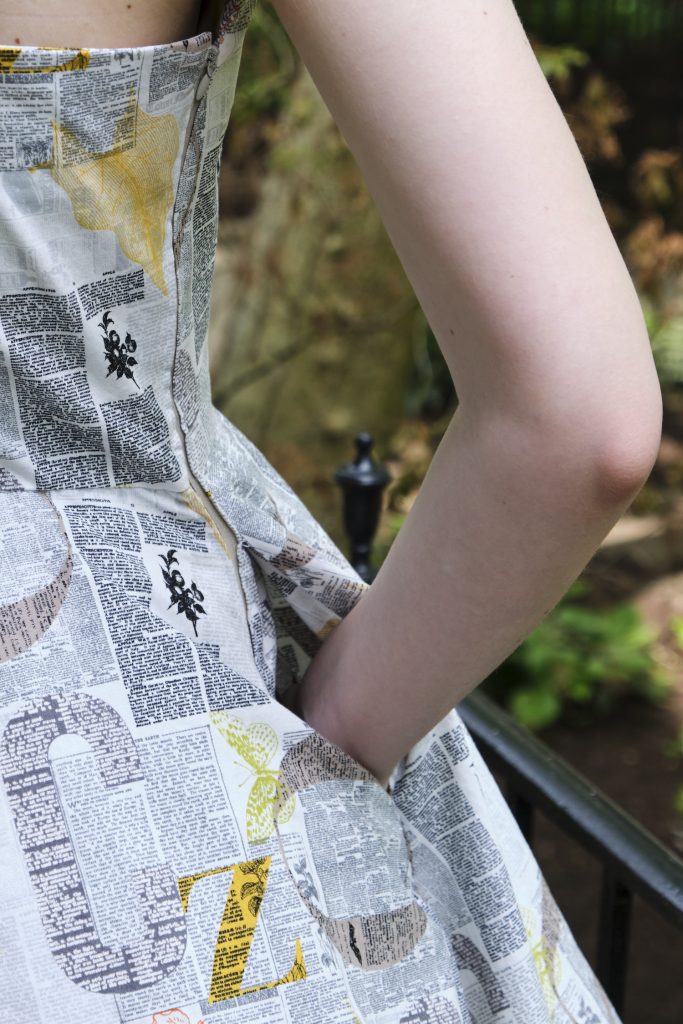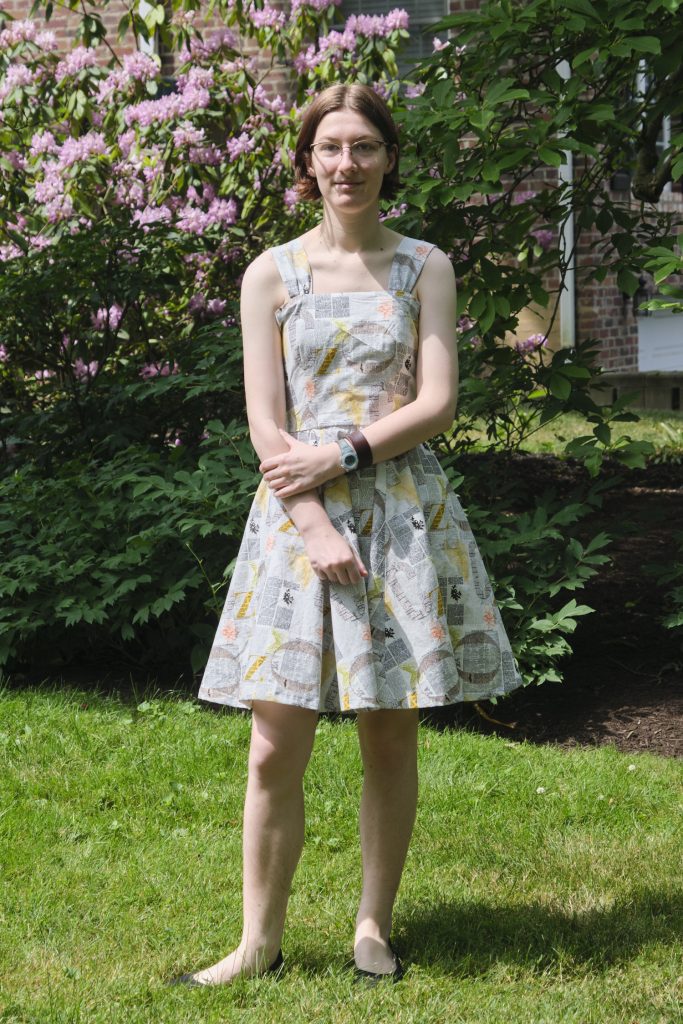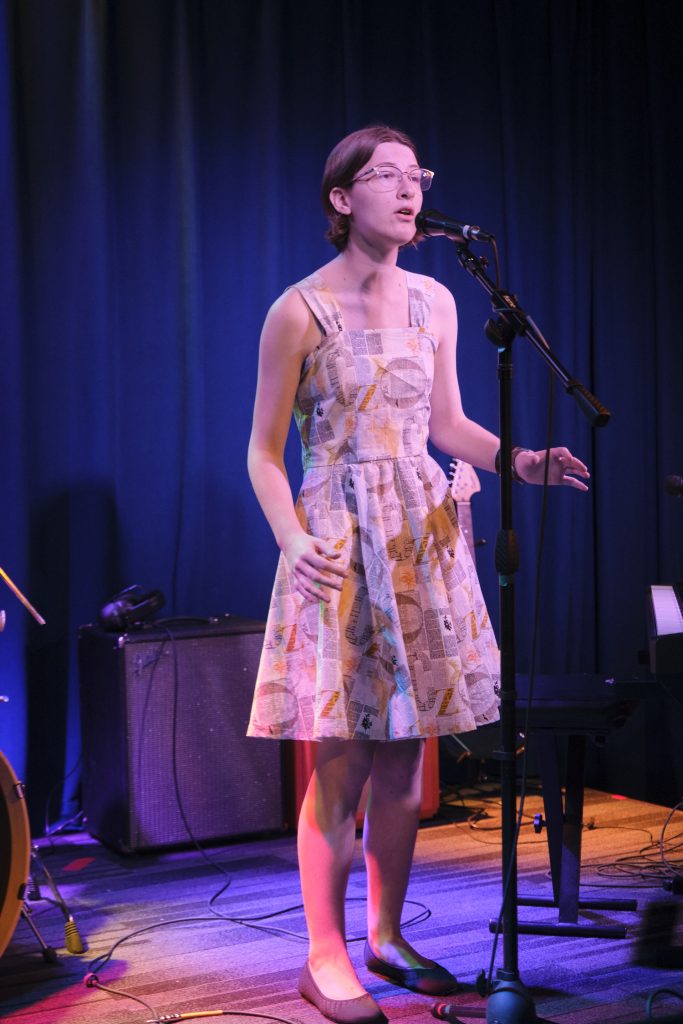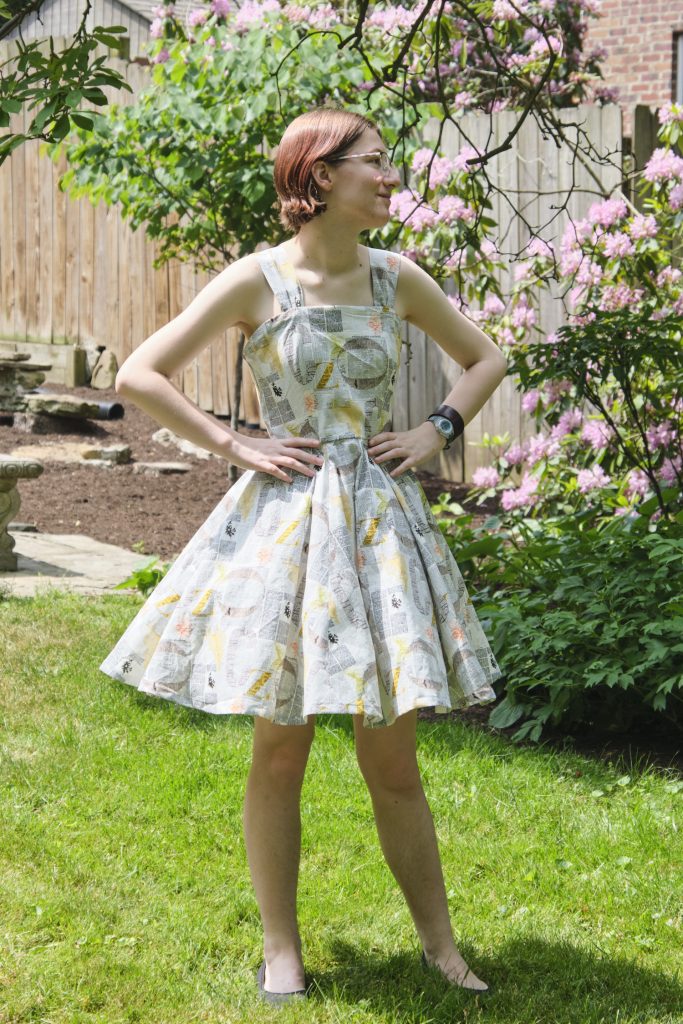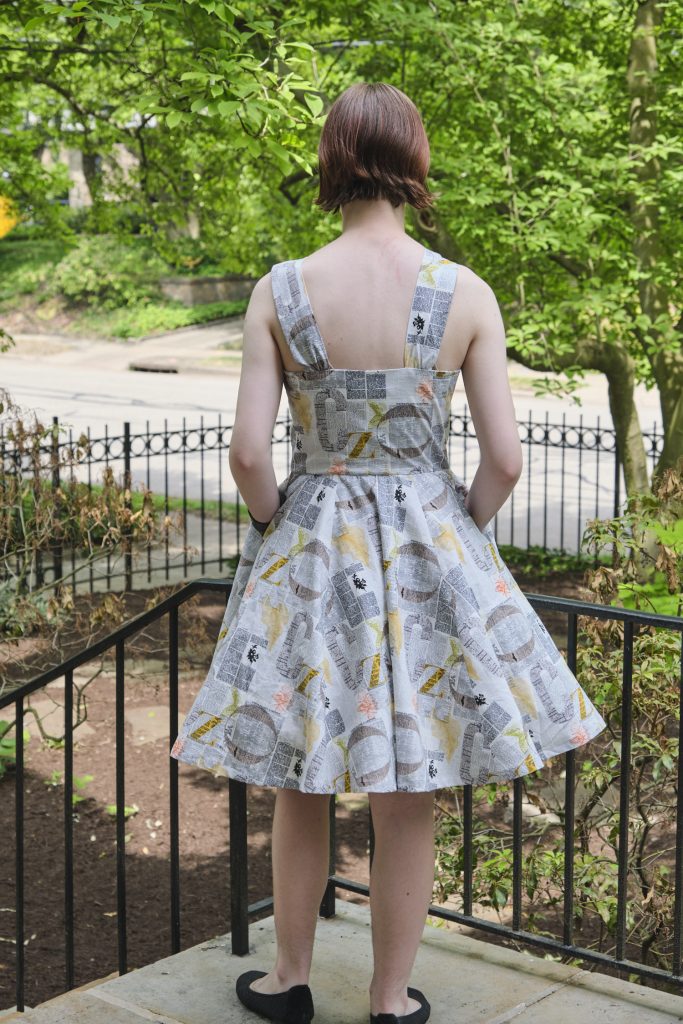I haven’t sewn many garments with woven fabric lately because I don’t like to iron my clothes after I wash them and I would also rather not deal with zippers. I also find knit clothes just tend to be more comfortable to wear. However, “fluffy” cotton double gauze is trendy right now, you don’t have to (and you really should not) iron it if you wear it crinkled, and when you use it for loose fitting summer clothes it is cool and comfortable and does not need a zipper. I bought three yards of purple fluffy from Mily Mae Fabrics and decided to make some woven palazzo pants.
I love the Pattern Emporium Walk Boldly and Urban knit pants patterns so selected their Vacation Vibes pattern for woven palazzo pants. The pattern has both a low-rise and high-rise option, as well as several pocket choices and options for subtle or dramatic flare legs. I love wearing high-rise pants so I went with the high rise waist, subtle flare leg, and foxy pockets. I cut a size AU10 short and made no pattern modifications whatsoever.
I washed and dried my fluffy fabric before use and did not iron it at all to keep it nice and fluffy. I projected the pattern onto the fluffy and cut it with a rotary cutter. It is a little tricky to sew because you want to avoid having it stretch out. I used a walking foot on my sewing machine with a slightly longer stitch length and surged all the seams after I sewed them to tidy up the edges. every time the pattern suggested pressing with an iron I ignored it, and just did some light finger pressing. I made a bias binding for the large foxy pockets (big enough for my phone without any modifications), but it requires several passes through the sewing machine to attach. By the time I got it attached it had stretched out a bit so I moistened the pocket openings with a damp cloth, reblocked them to their proper shape with my hands, and let them dry before I finished attaching the pockets. The pants were very easy to sew, and went together quickly. The waistband was super easy to assemble as there was nothing to stretch: I made a casing and threaded a piece of 2″ elastic through it. I’m 5’2″ and ended up hemming the short length 2.25 inches to wear with flats. The only time I touched my iron was to very lightly press the hems.
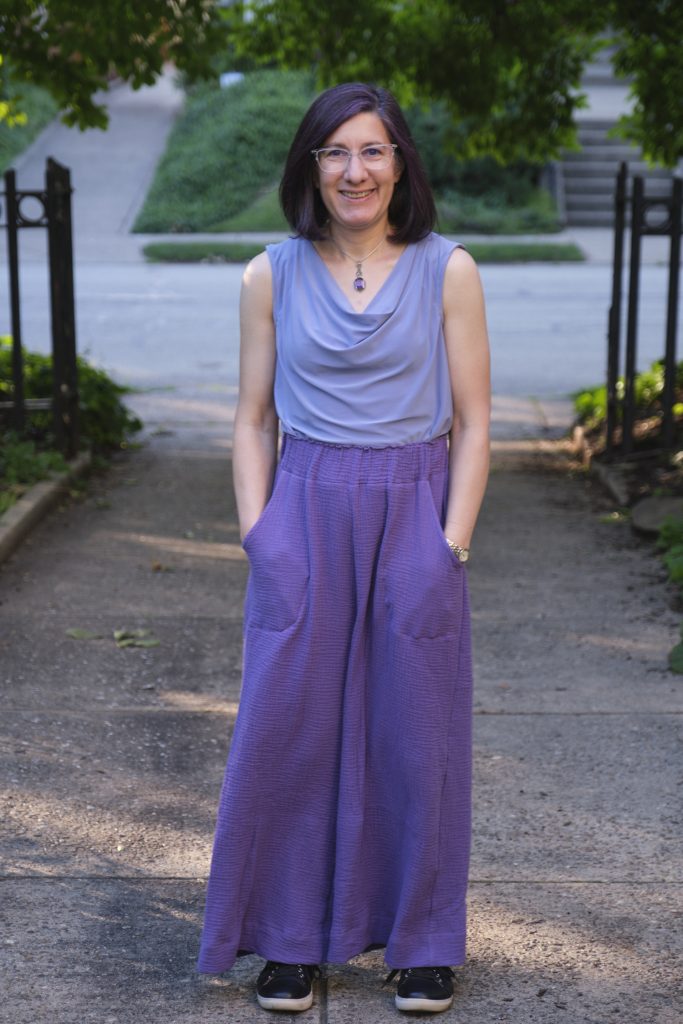

Here I am modeling the pants with my new Chorus top. I tucked it in so you could see the waist band but I will probably wear this shirt untucked. I like the subtle leg option, which is plenty wide on me. The dramatic leg could be fun with the right fabric, but may be more pants than I really need.
I thought the pants looked pretty good and were comfy to wear. But the rise was really sky high on me and the crotch was sitting pretty low. I am a big fan of high-rise pants, but as a short person, I sometimes find high-rise too high when there is no petite version. I also find I frequently have to size down and/or grade in the waist on PE patterns, despite choosing sizes that match my measurement. I decided to wear my pants to work all day and see how they did. They were comfortable and looked alright, and the double gauze was just right in both the 75-degree F outdoor weather and indoor air conditioning. but by the end of the day I was convinced that the waist was definitely too high for me. I also noticed that the pants slipped down a bit as I wore them and I kept stepping on the hem. The pockets were kind of droopy and I was concerned my phone could fall out when I sat down.
I cut off the waistband, removed about 2 inches from the top of the pants and graded in the sides from the hip up to the waist. I took about 3 inches out of the waistband circumference and sewed it back on. I think they fit much better now. They sit right at my natural waist rather than above it and there isn’t so much extra fabric around the waist. Next time I make these I think I would cut a size smaller (especially if I use double gauze since it stretches out a bit when you wear it), low rise, and still probably grade in the waist. I would also reshape the pocket opening to attach higher on the leg and hem them a bit higher. I might try a yoga waist band in a coordinating athletic knit (the pattern has instructions for that too!).
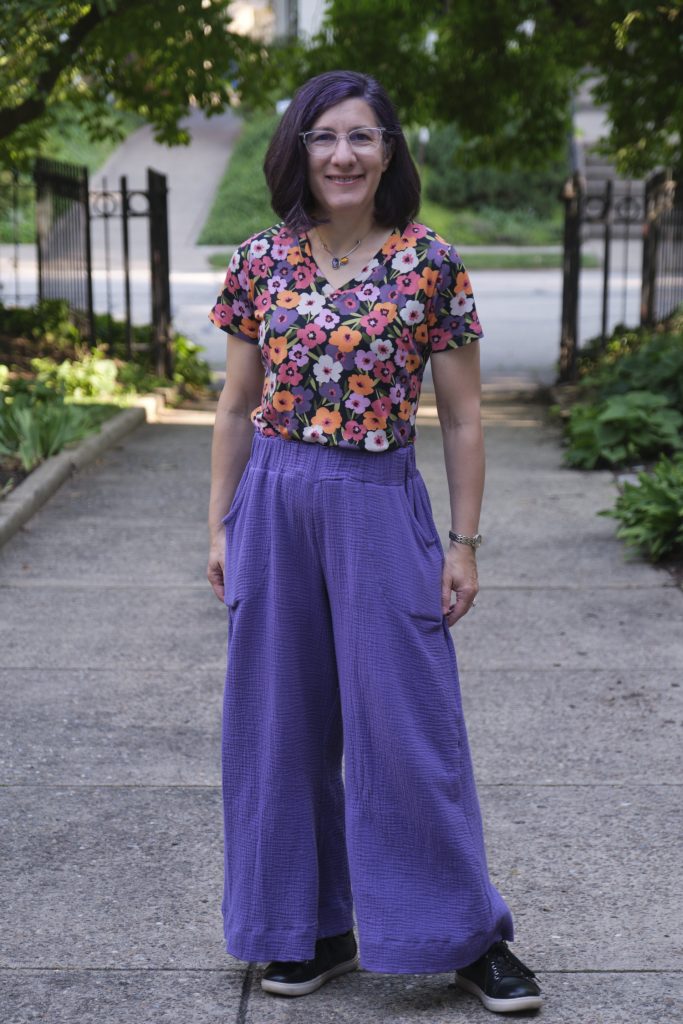
New photos show the reconfigured waistband. As an added bonus, since the pants are pulled up more the hems have risen and I no longer trip over them. I made a Sinclair Bondi v-neck tshirt (my first Bondi v-neck) out of a floral DBP in my stash to match the pants. I was going to make a dress from this fabric, but I liked how it paired with the pants so decided to make separates instead. I also like the shirt untucked. Skirt coming soon. I wore this outfit to work, and by the time I walked home it was 92 degrees F. The whole outfit was still comfortable, even in the heat and humidity!
